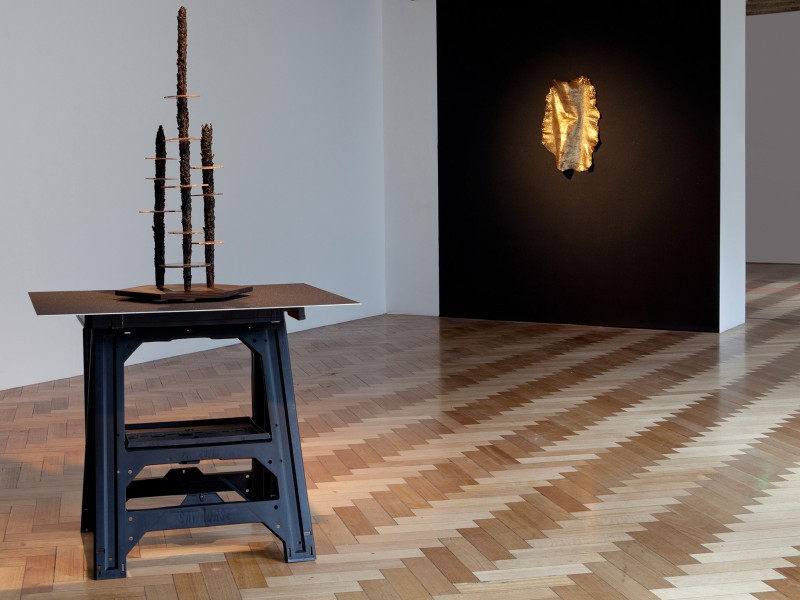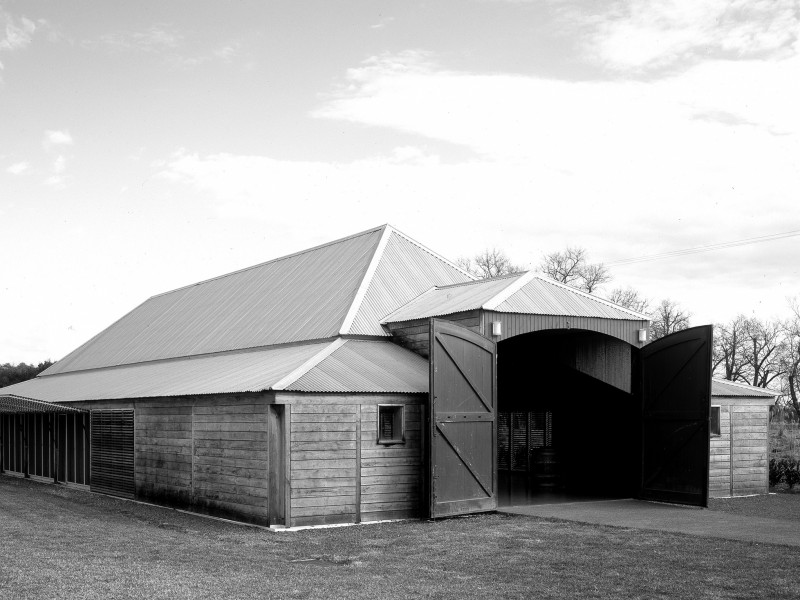Robert Knoke is drawing portraits of a very different nature. The German born artist has been recording contemporary fashion and art luminaries over the past seven years. From fashion innovators such as Rick Owens and Bernard Wilhelm to iconic musicians such as Casey Spooner, The Kills and Patti Smith, Knoke is surreptitiously challenging traditional notions of portraiture through his abstract and intuitive depictions. His graphic application of materials and techniques include a simple paper canvas, black markers, pencils, fingerprints, glitter, ballpoint and grease pens which all sit in stark contrast to the majestic oil paints commonly used in traditional portraiture. Knoke’s fervent use of ‘anti-artist materials’ is cultivating a contemporary ideology around portraiture and the portrait.
Drawing with intuition instead of inhibition is what makes Knoke’s portraits aesthetically unique. He has the instinctive ability to measure the time and transcendent energy that infiltrates the brief sittings with his subjects. Knoke establishes a connection with the people he meets and exposes part of their enigma through his abstract and animated renderings. From a distance the faces are easily distinguishable, as are each of the renowned figures that inhabit his work. Upon closer inspection, however, the lines are chaotic and embody a frenetic energy that reveals a deeper realm of the subconscious.
Knoke’s process is the key to unraveling the energy and depth evident in his portraits. “It’s necessary for me to meet the subjects in person and to take their photos. I have to see the architecture of their face and body,” he says. Knoke continues his process from these photographs alone, away from of his subjects. Minimal time is spent meeting and familiarising himself with each person. “I don’t want to destroy the first impression I have of them. The longer I spend with a person, the less I can see them. I never did portraits of my parents, for instance.”
Each portrait reflects an enigmatic stance, idiosyncratic to the subject. It also appears that the detachment and romance of the photograph assists in preserving Robert’s initial impression of them. The real transition occurs when Knoke retreats to his studio, where, starting with the articulation of the face, he manipulates the paper until the seemingly invisible energy permeates the surface.
Knoke is quick to admit that not every portrait is a great success. His enthusiasm, however, is renewed upon the successful application of what he perceives to be a strong and perfect drawing. After completing his most recent artworks of creative director Fabien Baron, and fetish porn Director Bruce LaBruce, Knoke felt a sense of accomplishment with the outcomes. “You draw for so long and all of a sudden it happens. One fucking drawing happens to be so much stronger than the drawings before. It’s like going up another step and you reach another level. That’s what happened with Bruce LaBruce’s piece and I felt the same with Fabien. That only happens once in a while and I’m not sure if that has something to do with them, or with me, it doesn’t really matter. I guess it’s just luck and coincidence. Things happen or they don’t. I wish I could force this and make every piece as strong, but I can’t.”
What still astounds Knoke is that people he personally respects are supportive of his practice. “So many people let me do their portrait. They aren’t doing it because a very famous artist is asking them, but because they believe in what I’m doing. That is still very surprising to me.” Submerged in an undercurrent propelled by the creative class, Knoke still manages to find a sense of grounding and appreciation for the people he encounters during the process. “This might sound completely naïve but I’m just always very excited to meet new people. That is one force to do my work. It’s about life.”
There is a certain energy that tickles him to commence working. It’s an energy that invades the embellishments on and around the figures he captures. The myriad of jaunted lines manifest themselves into thick, thin and rolling knots. Some burst onto the page spontaneously as dark shapes, harsh scratchings and dramatic entanglements, others flow freely and effortlessly around the canvas, creating a kind of invigorating performance imbuing each portrait with a sense of depth.
Knoke insists that he is not interested in artistic collaboration with his subjects, that is not what his work is about. However, when he met Chase and Joey from The Black Soft, it became apparent that the artistic connection was of influence. “Before we met personally, we discovered each other’s work simultaneously. I felt very attached to the way they make music and they reacted very strongly to my work. So when we met, we decided right away that the portrait would be the image for their new record. They gave me their music to listen to while I was drawing. That felt like some sort of artistic exchange.”
There is no preconceived notion of what each portrait should be. Knoke believes that when it comes to his work “everything is abstract in the end”. Knoke’s interpretation is not fussy, allowing us, as spectators, to analyse and infuse our own meaning into each work.
Knoke does not shy away from risk, he has immersed himself in a creative landscape through serendipitous introductions and exchanges, shying away from the manufactured artifice of the art world. Knoke has a candid nonchalance towards status and fiscal gain, teamed with an untamed bravery that exists at the core of his creative success.
As an artist,” Knoke believes that “it’s necessary to realise, that you might be poor all of your life. Even though your art is very good, you have to be aware that you might never be successful within the art market. You can’t produce an art piece that is uncompromising while simultaneously trying to please people, make a living or even get rich.”
Image Credits:
Image 01. The Black Soft 2012. Ball pen, grease pencil, marker, gloss paint, glitter on paper. 210 x 200 cm. Photo by Roland Schmidt.
Image 02. Fabien Baron 2012. Ball pen, grease pencil, marker, gloss paint on paper. 210 x 200 cm. Courtesy of the artist. Photo by Roland Schmidt.
Related Features
-
16
-
-
-

